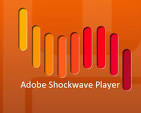The Rise and Fall of Adobe Shockwave
Adobe Shockwave, once a prominent multimedia platform for interactive content on the web, has had a tumultuous journey over the years. Originally developed by Macromedia, Shockwave was acquired by Adobe in 2005 as part of its broader strategy to dominate the digital media landscape.
During its heyday, Adobe Shockwave was widely used for creating and delivering interactive games, animations, and rich multimedia experiences online. It enabled developers to craft immersive content that captivated audiences across various platforms.
However, as web technologies evolved and newer standards like HTML5 emerged, Adobe Shockwave began to lose its relevance. The rise of mobile devices further accelerated its decline, as Shockwave struggled to adapt to the demands of a mobile-first world.
In 2019, Adobe announced the discontinuation of Shockwave Player for Windows. The company cited the shift towards modern web standards and the decreasing demand for the plugin as reasons for its demise. By April 2019, Adobe officially ended support for Shockwave Player on all platforms.
While Adobe Shockwave may have faded into obscurity, its legacy lives on in the evolution of web technologies. Its contributions to interactive multimedia content have paved the way for modern web experiences that prioritize performance, security, and cross-platform compatibility.
As we bid farewell to Adobe Shockwave, we remember its impact on shaping the early days of online interactivity and acknowledge its role in pushing boundaries in digital media innovation.
Everything You Need to Know About Adobe Shockwave: FAQs and Alternatives
- What is Adobe Shockwave?
- Is Adobe Shockwave still supported?
- How do I install Adobe Shockwave Player?
- Can I use Adobe Shockwave on mobile devices?
- What are the alternatives to Adobe Shockwave?
- Why did Adobe discontinue support for Shockwave?
What is Adobe Shockwave?
Adobe Shockwave is a now-discontinued multimedia platform that was developed to enable the creation and delivery of interactive content on the web. Originally introduced by Macromedia and later acquired by Adobe, Shockwave was widely used for developing immersive games, animations, and rich multimedia experiences online. It allowed developers to craft engaging content that could be experienced across different platforms. However, with the advancement of web technologies and the emergence of newer standards like HTML5, Adobe Shockwave lost its relevance and support was officially discontinued by Adobe in 2019. Though no longer in use, Adobe Shockwave played a significant role in shaping the early landscape of interactive multimedia on the internet.
Is Adobe Shockwave still supported?
As of April 2019, Adobe Shockwave is no longer supported by Adobe. The company officially ended support for Shockwave Player on all platforms, citing the shift towards modern web standards and the decreasing demand for the plugin as reasons for its discontinuation. Users are encouraged to transition to alternative technologies and platforms that align with current web development practices and offer better compatibility and security features.
How do I install Adobe Shockwave Player?
To install Adobe Shockwave Player, you can visit the official Adobe website and locate the download page for Shockwave Player. From there, you can follow the on-screen instructions to download the installation file. Once the file is downloaded, double-click on it to begin the installation process. Follow the prompts in the installation wizard to complete the setup. After installation is complete, you may need to restart your browser for the changes to take effect. Adobe Shockwave Player should now be installed on your system, allowing you to enjoy interactive multimedia content across various websites that still utilize this technology.
Can I use Adobe Shockwave on mobile devices?
Unfortunately, Adobe Shockwave is not supported on mobile devices. Due to the evolving landscape of web technologies and the shift towards mobile-first experiences, Adobe discontinued support for Shockwave Player on all platforms in 2019. This means that users cannot use Adobe Shockwave on smartphones or tablets, as the plugin was not optimized for mobile environments. As a result, developers and content creators have had to explore alternative solutions to deliver interactive multimedia experiences that are compatible with modern mobile devices and web standards.
What are the alternatives to Adobe Shockwave?
When looking for alternatives to Adobe Shockwave, users have several options to consider in the realm of multimedia content creation and delivery. One popular alternative is HTML5, a versatile web standard that supports rich multimedia experiences without the need for plugins. Unity3D is another powerful platform that enables developers to create interactive 3D content for various platforms. Additionally, tools like WebGL and WebAssembly offer efficient ways to render graphics and animations directly in the browser. Each alternative comes with its own set of features and capabilities, allowing users to choose the solution that best fits their specific needs and requirements.
Why did Adobe discontinue support for Shockwave?
Adobe made the decision to discontinue support for Shockwave due to several factors. One of the main reasons was the evolving landscape of web technologies, with newer standards like HTML5 gaining popularity for delivering interactive content more efficiently and securely. The decreasing demand for the Shockwave plugin, coupled with the rise of mobile devices that posed compatibility challenges, also played a significant role in Adobe’s choice to phase out Shockwave. By focusing on modern web standards and user needs, Adobe aimed to streamline its product offerings and align with the changing demands of the digital era.
Tags: adobe, adobe shockwave, html5, immersive content, interactive content, macromedia, mobile devices, multimedia experiences, multimedia platform, web standards, web technologies
